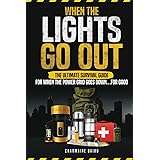Braving the wilderness alone, especially when the skies open up, is a true test of skill and spirit. As you saw in the video above, embarking on a solo survival camping trip in heavy rain presents unique challenges, from finding the right spot to building a dry shelter and even cooking a warm meal. It’s not just about surviving; it’s about thriving in the face of nature’s raw power.
Mastering solo survival camping in heavy rain starts long before you feel the first drop. It involves careful planning, smart gear choices, and a robust understanding of fundamental bushcraft skills. Let’s delve deeper into how you can prepare for and enjoy a rainy wilderness adventure, much like the one showcased.
Choosing Your Sanctuary: Campsite Selection in Wet Weather
The first crucial step in any successful solo camping trip, particularly in the rain, is selecting an optimal campsite. In the video, the narrator wisely moved past a steep, waterlogged area. This highlights a fundamental truth: where you pitch your camp can make or break your experience.
Finding the Perfect Spot: More Than Just Flat Ground
Imagine your campsite like a small boat in a coming storm. You want it anchored firmly on high ground, not in a low basin where water collects. Look for these key features:
- Elevated Terrain: Always choose higher ground. Water flows downhill, and you don’t want your tent or shelter becoming an impromptu bathtub.
- Natural Drainage: Observe the land. Are there natural gullies or channels where water clearly runs? Steer clear of these, but use slight rises in the land to your advantage.
- Tree Cover (Strategic): A canopy of dense evergreen trees can offer a valuable first layer of protection, deflecting some of the rain before it reaches your shelter. However, be mindful of “widow makers” – dead branches that could fall in a storm. Also, avoid areas under trees that tend to drip long after the rain stops.
- Wind Protection: While rain is the primary concern, wind can exacerbate the cold and make your shelter less stable. Use natural windbreaks like dense foliage or large boulders to your advantage.
- Avoid Waterways: Setting up too close to rivers, streams, or lakes can be risky due to potential flooding, especially during heavy rainfall. Give yourself ample space.
Crafting Your Fortress: Building a Waterproof Bushcraft Shelter
A good shelter is your lifeline in a rainy forest. While modern tents are excellent, bushcraft skills allow you to create effective shelters from natural materials or a simple tarp, providing an invaluable skillset for solo survival camping in heavy rain. Think of your shelter as your personal command center, designed to keep you dry and secure.
Essential Principles of Rain-Resistant Shelter Construction
Whether you’re using a tarp or natural materials, these principles remain constant:
- Elevated Floor: Even if your ground choice is good, a raised sleeping platform (like a simple cot or a bed of dry leaves and branches) keeps you off the cold, damp earth. This is like lifting your mattress off a puddle.
- Steep Angles for Runoff: Tarps or lean-tos should have a steep pitch. This lets rainwater slide off easily, like water off a duck’s back, instead of pooling and potentially leaking through.
- Good Ventilation: It seems counterintuitive in the rain, but proper airflow is crucial to prevent condensation inside your shelter. Without it, you’ll feel damp even if the rain isn’t getting in. Leave a small opening for air circulation.
- Proper Anchoring: Wind often accompanies rain. Secure your tarp or shelter firmly with strong ropes, stakes, and possibly rocks to ensure it doesn’t collapse or blow away.
- Trenching (Optional but Smart): Digging a small, shallow trench around the perimeter of your shelter can redirect ground runoff, similar to how gutters direct water away from a house foundation.
Fueling Your Adventure: Cooking Outdoors in a Downpour
Watching the narrator cook a juicy steak in the video likely made you hungry, but doing so in heavy rain requires ingenuity. Your body burns more calories staying warm in wet, cold conditions, so a hot meal isn’t just a comfort; it’s a necessity for energy and morale.
Mastering the Camp Kitchen in Wet Weather
Cooking with a roaring fire when everything is soaked can seem impossible, but with the right techniques, it’s entirely doable:
- Fire Starting in Wet Conditions: This is arguably the biggest challenge. Gather tinder, kindling, and fuel from under logs, inside dead trees, or under overhangs where it might be drier. Waterproof fire starters (like cotton balls soaked in petroleum jelly, dryer lint, or commercial fire plugs) are invaluable. Create a ‘fire tower’ with stacked logs to raise your fire off the damp ground.
- Shelter for Your Fire: Just like your sleeping area, your cooking fire needs protection. A small tarp strung above the fire, or a natural rock overhang, can keep the worst of the rain off, allowing your flames to flourish.
- Food Protection: Keep all your food sealed in waterproof bags or containers. Nobody wants soggy bread or wet spices.
- Cooking Methods:
- Grilling: As seen with the steak, grilling over an open fire is fantastic if you can maintain a good flame.
- Foil Packet Cooking: This is a rainy-day savior. Wrap vegetables, meats, and seasonings in heavy-duty aluminum foil and place them directly in the coals. The foil steams the food beautifully and keeps it clean.
- Pot/Pan Cooking: Use a pot with a lid over your fire for boiling water (for drinks or dehydrated meals) or simmering stews.
- Safety First: Always have a bucket of water or a shovel nearby to put out any stray embers, especially in a forest setting.
Beyond the Basics: Essential Tips for Solo Survival Camping in Heavy Rain
Your gear is an extension of your survival skills. The right equipment, coupled with smart practices, makes all the difference when you’re facing persistent rain.
Staying Dry and Comfortable
- Layer Up: Wear moisture-wicking base layers, insulating mid-layers (fleece or wool), and a waterproof, breathable outer shell. Avoid cotton, as it absorbs water and takes ages to dry.
- Waterproof Everything: Use dry bags for clothes, electronics, and your sleeping bag. Think of it like packing everything inside a series of sealed balloons.
- Footwear: Waterproof boots are essential, but even they can get wet eventually. Bring extra wool socks and change them frequently to prevent blisters and trench foot.
- Mental Fortitude: The psychological aspect is huge. Staying positive, appreciating the solitude, and focusing on the task at hand will get you through. Remember, every challenge overcome builds resilience.
Navigation and Safety
Rain can significantly reduce visibility and make trails slippery. Always have a waterproof map and compass (and know how to use them), alongside a fully charged GPS device or smartphone with offline maps. Inform someone of your route and expected return time before you leave.
Tackling a solo survival camping trip in heavy rain is an adventure that pushes your boundaries and sharpens your connection with nature. With preparation, the right skills, and a resilient mindset, you can turn a challenging downpour into an unforgettable wilderness experience, just as the video shows you.











